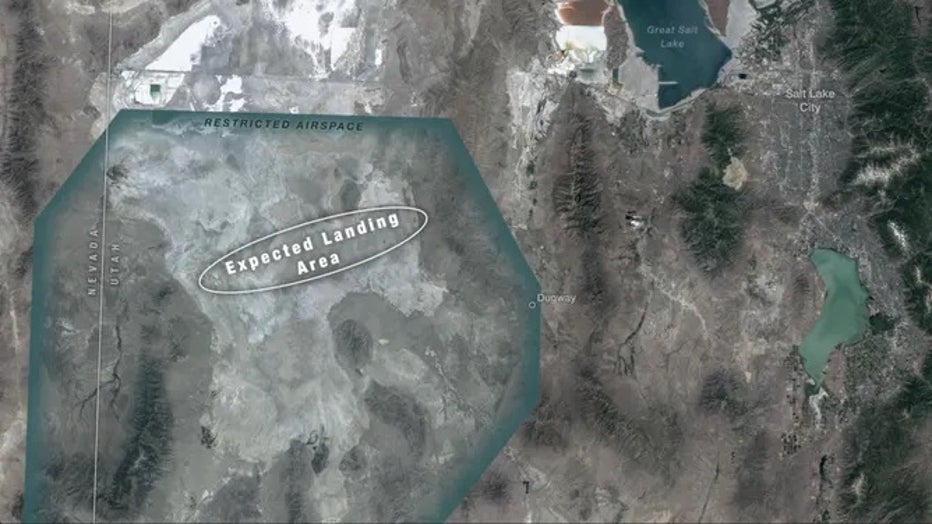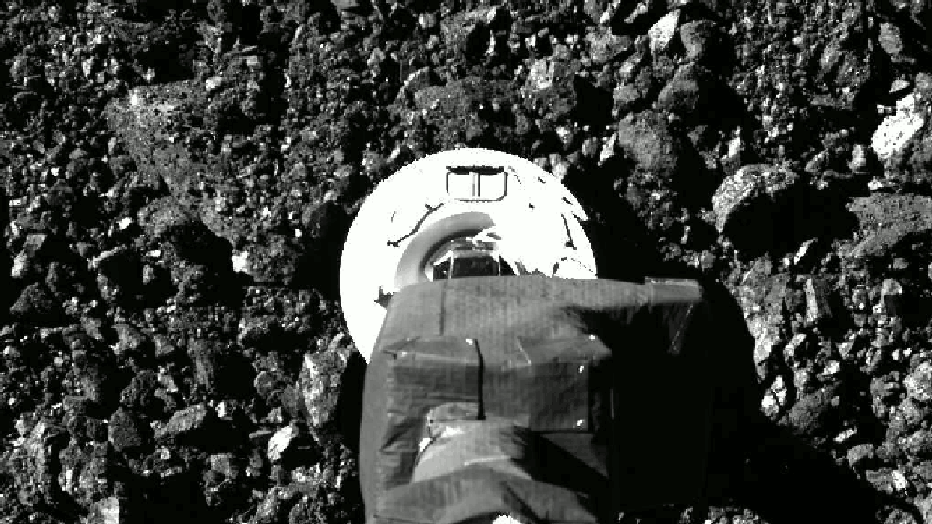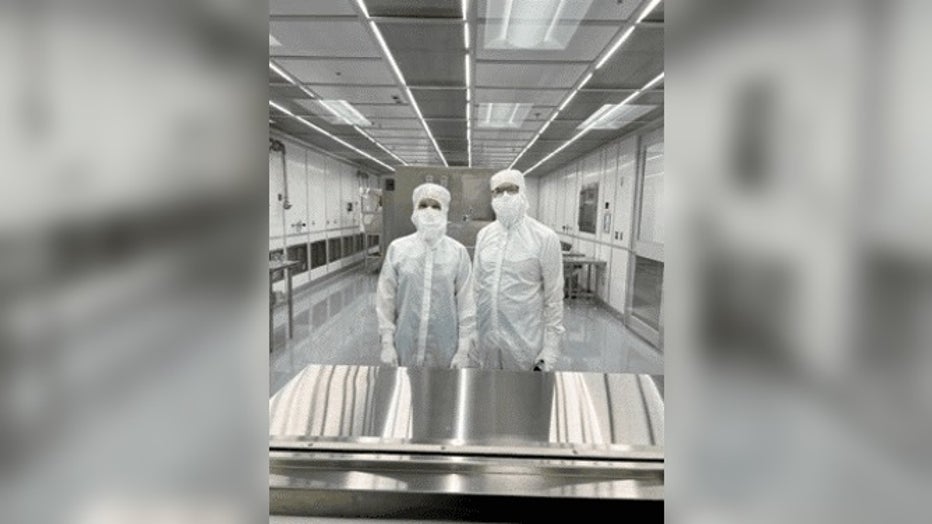OSIRIS-REx asteroid sample return test run in Utah
Video provided by NASA shows the rehearsal of the helicopter transport of the OSIRIS-REx Sample Return Capsule to a clean room area in Utah. The spacecraft is set to drop off a sample from asteroid Bennu on Sept. 24.
Pieces of a potentially hazardous asteroid Bennu will come barreling down to Earth this weekend, landing in Utah, following a 7-year NASA spacecraft journey to collect a sample of the asteroid.
NASA’s OSIRIS-REx spacecraft stands for Origins, Spectral Interpretation, Resource Identification, and Security–Regolith Explorer. On Sunday, the spacecraft will drop off about 9 ounces of rocks, dust and dirt collected from the asteroid Bennu in 2020.
The spacecraft completed its final task before the sample release on Sept. 17 when OSIRIS-REx fired its thrusters to change its velocity by 7 inches per minute relative to Earth. NASA said this correction maneuver moved the sample landing zone east by about 8 miles to the center of its predetermined landing area, inside the Defense Department’s Utah Test and Training Range.
NASA TO VISIT METALLIC ASTEROID PSYCHE IN SEARCH OF CLUES ABOUT HOW PLANETS FORM
On Sunday at 4:42 a.m., the spacecraft will release the asteroid sample capsule. The capsule release and landing will happen on Sunday, regardless of the weather.

OSIRIS-REx sample landing forecast in Utah on Sunday. (FOX Weather)
Getting a bull’s-eye
The landing date was predetermined because late September is when Earth intersects with Bennu’s orbit every year. Weather will still be necessary for the sample recovery team. The meteorology team at the West Desert Test Center for U.S. Army Dugway Proving Ground in Utah has been providing forecasts to help NASA’s team prepare for the landing and retrieval.
The target landing area is a 36-mile by 8.5–mile zone within the Utah Test and Training Range, about 80 miles from Salt Lake City.
OSIRIS-REx Deputy Project Manager Michael Moreau, with NASA, told FOX Weather to make this landing window, the capsule will be released from a third of a distance to the Moon and then needs to fly through a mile-wide diameter area in Earth’s atmosphere for it to land in the designated footprint. It’s an impressive feat for navigators and spacecraft operators to accomplish.

A map of the asteroid Bennu sample landing area in Utah. (NASA)
“It’s like putting a dart board at the one end of a basketball court and throwing the dart from the other end and getting a bull’s-eye,” he said. “That’s what we do.”
At 8:42 a.m., the capsule will enter Earth’s atmosphere. The tire-size capsule carrying the Bennu sample will be traveling at 27,500 mph; after blasting into Earth’s atmosphere, parachutes will open at about 5,000 feet, slowing the capsule down for landing.
Multiple tracking assets and aircraft will follow the capsule after it separates from OSIRIS-REx.
Ground telescopes will be tracking the spacecraft, and then an Air Force tracking station in Maui will look for a tiny object after the separation. Radar tracking antennas at the Utah Test and Training Range will monitor the capsule when it gets closer to Earth. Infrared cameras should first see the capsule’s hot trail screaming through Earth’s atmosphere. DoD cameras and radar will continue tracking it before recovery helicopters follow the parachute deployment and, finally, the landing.
NASA DISCOVERS ASTEROID THAT HAS SLIGHT CHANCE OF HITTING EARTH ON VALENTINE’S DAY 2046
“Multiple different views and everything from just tracking a little, tiny point of light to having this 4K picture of it on the parachutes right before it lands,” Moreau said.
Helicopters will transport the sample retrieval team to collect the sample and bring it back to a clean room.
Asteroid Bennu sample will be studied around the world
Bennu was selected for the mission because it’s a near-Earth asteroid considered a fossil of our solar system, and it likely contains organic molecules from within 10 million years of our solar system’s formation. The asteroid makes a close approach to Earth every six years, and while it’s not expected to hit our planet in over a century, it could.
Bennu is about as wide as the height of the Empire State Building. Before collecting a sample from Bennu, OSIRIS-REx mapped the asteroid, taking detailed images of its surface.

Captured on Oct. 20 during the OSIRIS-REx mission’s Touch-And-Go (TAG) sample collection event, this series of 2 images shows the SamCam imager’s field of view at the moment before and after the NASA spacecraft touched down on asteroid Bennu’s surfac
Information from the mission will help scientists and engineers learn more about deflecting an asteroid like Bennu when needed and provide more clues about how our solar system formed.
After NASA’s team brings the sample to a temporary clean room in Utah, pieces of asteroid Bennu will be brought to NASA’s Johnson Space Center in Houston.
Part of the sample will be given to the Japanese Space Exploration Agency (JAXA) in exchange for some of the asteroid samples collected from the Japanese Hayabusa spacecraft.
“That was kind of an insurance policy if one of the missions didn’t work, and the scientists will still get to do some of their investigations,” Moreau said.

Nicole Lunning, Deputy OSIRIS-REx curator within the Astromaterials Research and Exploration Science (ARES) division at NASA’s Johnson Space Center (left) with Dante Lauretta, OSIRIS-REx principal investigator and professor of planetary science from
For two years, the OSIRIS-REx science team, led by University of Arizona planetary scientist Dante Laurette, will analyze the sample at a JSC lab set up expressly for the sample in Houston, where 70% of the sample will be preserved.
HOW NASA IS WORKING TO PROTECT EARTH FROM AN ASTEROID STRIKE
NASA said more than 200 scientists worldwide will study the asteroid sample, including from Japan and Canada.
What’s next for NASA’s asteroid-exploring spacecraft?
Meanwhile, OSIRIS-REx will zoom about 480 miles above Earth and continue its journey to study the asteroid Apophis in a few years when it makes a close flyby of our planet. Since it’s onto a new target, the mission will assume a new acronym: OSIRIS-APEX.
The mission’s current deputy principal investigator, Daniella DellaGiustina, with the University of Arizona, will become the APEX mission principal investigator.
Instead of collecting a sample of Apophis, OSIRIS-APEX will use its thrusters to move rocks and dirt around on the asteroid to help the science team learn about its surface properties.
The $200 million new mission culminates when Apophis flies by Earth in 2029, close enough that we can see it with the naked eye.
LINK: Get updates and more on this story at foxweather.com.

